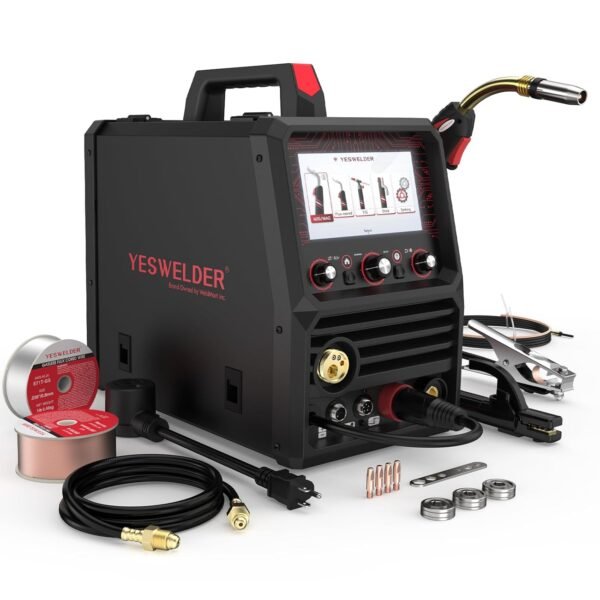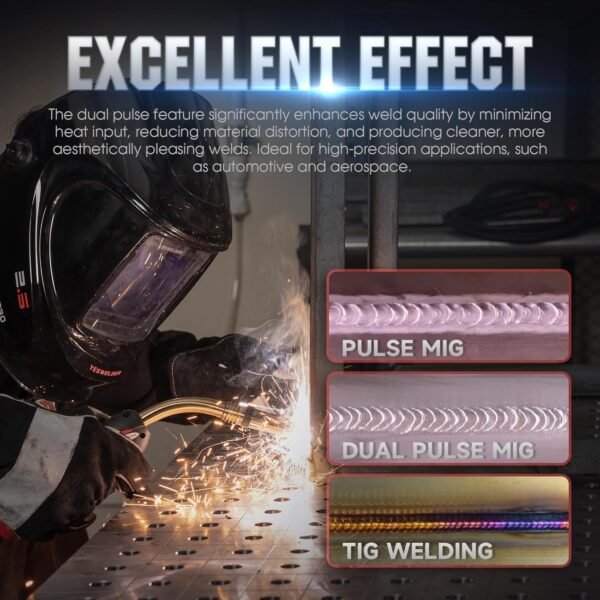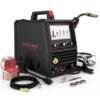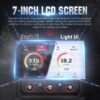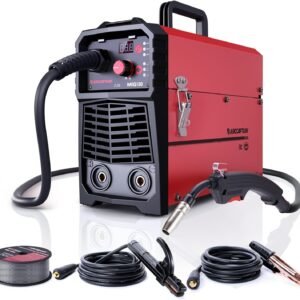YESWELDER DP200 MIG Welding Equipment Review with DualPulse and IntuiWeld Tech Insights
YESWELDER DP200 MIG Welding Equipment Review with DualPulse and IntuiWeld Tech Insights
- DualPulse MIG Tech makes welding thin materials like aluminum remarkably easy, even for beginners, by mimicking the precision of TIG welding.
- The 7-inch large LCD screen with dual-color UI offers a clear and intuitive interface, allowing quick adjustments with a simple knob twist.
- Smart Parameter Matching automatically adjusts wire feed speed, current, and voltage based on material thickness, saving setup time and enhancing efficiency.
- Custom Memory Channels let you save up to 50 settings in MIG mode and 20 in other modes for rapid recall, perfect for professionals handling diverse welding tasks.
As an Amazon Associate I earn from qualifying purchases.
Description
Highlights of the YESWELDER Firstess DP200 Dual Pulse MIG Welder
Using the YESWELDER Firstess DP200 has been quite an experience, especially given its versatility across various welding methods. This machine supports MIG, Pulsed MIG, Flux Core, Spool Gun MIG, Lift TIG, and Stick welding, which covers almost every common welding need I encounter. The DualPulse MIG technology really impressed me, as it mimics TIG-quality welds with a lot less fuss. Even if you’re not a welding expert, this welder makes it easier to handle thin materials, including aluminum—a material that’s notoriously tricky to weld. The combination of PulseFlex and AdaptivePulse technologies gives me precise control over heat input, which means fewer burn-throughs and cleaner, more professional results.
- DualPulse MIG technology for TIG-like welds
- Suitable for thin metals, including aluminum
- Supports multiple welding processes for versatility
Good Aspects of the IntuiWeld Interface and Display
The 7-inch LCD screen on this welder is not just a fancy add-on; it genuinely enhances usability. Its IntuiWeld interface allows me to adjust settings by twisting a single knob, which is much faster than fiddling with buttons or menus. The screen is dual-color, letting me switch between black and white modes depending on lighting conditions or personal preference. This small detail actually made a big difference during longer sessions, reducing eye strain and helping me focus on the weld seam. The display also shows all the critical parameters clearly, so I never had to guess or double-check values. For an industrial tool, this user-friendliness was unexpected but very welcome.
Smart Parameter Matching Cuts Setup Time
One feature I found particularly useful was the smart parameter matching system. After selecting the material thickness, the welder automatically adjusts the wire feed speed, current, and voltage to optimal levels. This automation means less trial and error and more time spent welding. I tested this on steel plates of various thicknesses, and the results were consistently solid. This feature is a godsend, especially when switching between projects or materials. If you’re like me and hate wasting time on tweaking settings, this function alone makes the welder worth considering.
Perks of Custom Memory Channels and Advanced Controls
The memory channels on this machine are a big plus, especially if you juggle different welding jobs. I was able to save up to 50 channels in MIG mode and 20 in Flux, Lift TIG, and Stick modes. This means I didn’t have to reset parameters every time I changed tasks or materials. It’s particularly helpful for professionals or hobbyists who work on varied projects. Additionally, advanced settings like inductance, voltage fine-tuning, wire feed speed, burn-back, and crater control give veteran welders the ability to customize the performance to their exact needs. I enjoyed tweaking these parameters to get that perfect bead on some stainless steel pieces.
Downsides of the YESWELDER DP200 to Keep in Mind
No product is perfect, and this welder has a few quirks. For one, its weight of 45 pounds makes it a bit cumbersome to move around, especially if you need something more portable for fieldwork. Also, while the interface is intuitive, the initial learning curve can be steep for absolute beginners who have never used a multiprocess welder before. Some users might find the advanced settings overwhelming at first, although this can be mitigated with practice. Lastly, the welder does not include batteries, but that’s standard for machines powered by AC, so it’s nothing unexpected.
- Heavier than some portable welders
- Steeper learning curve for beginners
- Advanced settings may intimidate new users
Alternative Offerings in the Multiprocess Welding Market
Compared to popular competitors like the Miller Multimatic 220 and the Lincoln Electric Power MIG 210 MP, this unit holds its own in terms of feature set and welding quality. The Miller is known for its rugged build and excellent TIG capabilities, but it comes at a higher price point. The Lincoln offers superb MIG and stick welding with a slightly simpler interface but lacks the extensive memory channels of this model. What the DP200 excels in is the smart parameter matching and DualPulse MIG technology, which are less common in competing welders at this price range. However, if portability or brand reputation is a priority for you, those alternatives might warrant a closer look.
Value for Money: Is It Worth the Investment?
Considering the range of welding processes, smart automation, and advanced controls, this welder offers solid value for money. It’s not the cheapest option on the market, but the price-performance ratio justifies the investment, especially if you plan to handle a variety of metals and thicknesses. The ability to save settings and the large, clear LCD screen add a layer of convenience that saves time and frustration. For professional welders or serious hobbyists who want a flexible, multipurpose machine, it delivers features typically found in higher-end models without the premium price tag.
Design and Build Quality: Practical but Heavy
The build of this welder feels sturdy and solid, which is reassuring when working in a rugged environment. The black version has a sleek appearance that looks professional in any workshop. However, the weight is something I noticed immediately; it’s a bit bulky for those who need to transport it frequently. The controls and connectors feel well-made, and the inclusion of a large LCD screen feels like a thoughtful design choice rather than a gimmick. Despite being manufactured in China, the overall quality and finish of the welder don’t feel cheap.
Performance Across Various Welding Modes
Testing the multiprocess capabilities, I was pleased with the consistent arc stability across MIG, Flux Core, and Stick modes. The Lift TIG feature worked surprisingly well for a machine in this price category, allowing smooth starts and good control. The spool gun compatibility is another highlight, especially for aluminum welding. The adaptive pulse technology helps manage heat input so that thin metals don’t warp or burn through, which is a common issue I’ve faced with less advanced welders. Overall, this machine performs reliably across different welding applications, making it a versatile addition to any workshop.
Having put this welder through various tests and scenarios, it’s clear that the YESWELDER Firstess DP200 offers a compelling mix of technology, usability, and versatility. While it has some minor drawbacks like weight and complexity for novices, its advanced features and thoughtful interface stand out in a crowded market. Whether you need a machine for professional jobs or serious DIY projects, this welder brings a lot to the table.
Additional information
| Manufacturer | YESWELDER |
|---|---|
| Item Weight | 45 pounds |
| Package Dimensions | 21 x 18 x 15 inches |
| Country of Origin | China |
| Item model number | DP200 |
| Style | Black Version |
| Power Source | ac |
| Included Components | MIG WELDER |
| Batteries Included | No |
| Batteries Required | No |
| Date First Available | August 6, 2024 |
